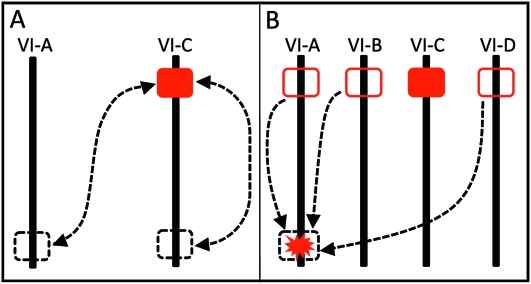Figure 3.—
Scenarios by which the F. chiloensis sex chromosome may have evolved. Solid red rectangles represent a sex-determining region homeologous to that in F. virginiana, while outlined red rectangles represent the gene region homeologous to this sex-determining region without sterility mutations. Dashed lines show translocation events while dashed rectangles represent the location of sex-determining genes either pre- or post-translocation, depending on the direction of arrows. The red starburst represents a gene region on LG VI-A with a novel sterility mutation. (A) Intra- and interchromosomal translocation events of an ancestral sex-determining region to or from the top of LG VI-C. (B) Possible interchromosomal translocations of F. virginiana sex-determining region homeologs to the bottom of LG VI-A. Alternatively, novel sterility mutations in a gene region located at the bottom of LG VI-A could have led to the independent formation of a sex-determining region.

